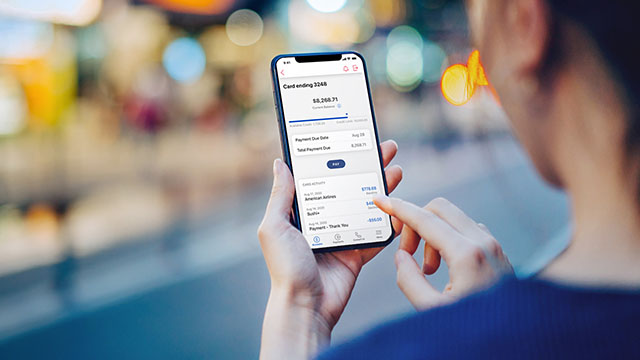The unstoppable rise of digital wallets: a business case that stacks up
If you are not using a digital wallet yet, you soon will be. The relentless growth of digital wallets will see more than 5.3 billion users by 2026 - more than half the world’s population.1 Yet, for some treasurers, adoption of this innovative and soon-to-be critical payment infrastructure can be hindered by misconceptions and a lackluster business case.
Key takeaways
- The e-commerce boom that began during the global pandemic spurred further adoption of digital wallets, particularly in older consumers and those not otherwise inclined to change their behavior.
- A misconception is that digital wallets are limited to consumer applications. If people are being paid, then there are growing uses for digital wallets.
- When it comes to digital wallets, Bank of America is investing systematically in a global footprint of sustainable providers with the best adoption rates.
The growth of digital wallets is clearly connected to the rapid rise of mobile commerce, with nearly 90% of smartphone users sending or receiving money via peer-to-peer (P2P) or mobile applications.2 This use of digital wallets is not limited to the young. The e-commerce boom that began during the global pandemic also spurred further adoption of digital wallets, particularly in older consumers and those not otherwise inclined to change their behavior. Now that digital behavior has been ingrained, there is no turning back.
The two main categories of digital wallets are those that directly consolidate and connect credit and debit cards, like Apple Pay® and Google PayTM, and those that hold some form of currency, like PayPal. For the uninitiated, the key to these payments is tokenization, whereby the user’s card or bank details are retained by them, and only an alias or token is shared with merchants. This facilitates a growing number of uses in the physical world, where multiple cards can be activated by the tap of a phone or in e-commerce through integration with almost any digital payment process.
The draw of alias payments increasingly includes a social aspect.
The core benefits for consumers are simplicity and security. Rather than carrying cards or remembering a bank account number, only singular contact details like a telephone number or email address are needed. By retaining control of data and simplifying the process, credit card fraud and errors from incorrect account details are reduced. In most cases, this simplicity translates into speed and immediacy of payment with near-instant receipt of funds and confirmation.
While simplicity and immediacy are clearly benefits to any digital user experience, the draw of alias payments increasingly includes a social aspect. For instance, users of Venmo in the United States include emojis and group messages along with payments to friends, while several wallets allow splitting entertainment bills and streamlining of hospitality payments. This social aspect is also cultural and even event-specific, leading to a proliferation of digital wallet offerings and approaches based on region, country and technology ecosystem.
A business-to-business digital wallet
The obvious appeal of alias payments for most treasurers and corporate users is to improve customer experience and boost consumer optionality by building streamlined and integrated payment journeys. E-commerce merchants and consumer goods companies can also utilize the rising social side of payments to engage with new customer demographics and establish brand loyalty.
However, a misconception is that digital wallets are limited to consumer applications. If people are being paid, then there are growing uses for digital wallets. This is particularly the case in industries with independent contractors who need to get paid quickly. Insurance, healthcare, assisted living and all forms of media and entertainment industries are already using digital wallets to improve the speed and simplicity of payments.
The rising value of data will increase the appeal of tokenization for business-to-business transactions.
The future potential for digital wallets to support business-to-business payments should also not be underestimated. Digital wallets not integrated with core bank accounts may currently limit higher-value transactions, given that cash earns no interest in a digital wallet. However, the likes of PayPal are solving this problem, affording the benefits of alias payments simplicity with straight-through processing to a traditional bank account.
Integration with core bank accounts and the rising value of data will increase the appeal of tokenization for business-to-business transactions, extending the benefits of simplicity and security. Tokenization of supplier data can reduce both fraud and the administration burden of vendor master data. This will increase the flexibility of supplier payment systems, allowing suppliers to directly manage their data, making changes to bank account details without needing to notify customers. Future use cases could also include intelligent routing and reconciliation of alias-based payments, which could function similarly to virtual accounts.
Picking a winner
The proliferation of alias payment providers is in mid-swing. Given the potential for future developments and increasingly niche applications, it is very likely that the number of digital wallets will continue to grow rather than consolidate.
For consumers, the challenge is choosing a wallet that integrates with a specific technology or social ecosystem. For treasurers, the challenge is investing in digital wallets that will survive. The social element to other wallets creates a risk as to what the lifecycle of each application will be. History has shown that social media applications move in and out of fashion much faster than traditional payment infrastructure.
Connecting to a digital wallet represents a technology investment for a treasury department, so a growing commitment risk can undermine the business case for adoption.
Optionality through a consolidated infrastructure
Rather than delay understanding and adoption of such a high-potential payment technology, the solution to this challenge is to partner with a bank that is already consolidating these capabilities to provide optionality and a streamlined experience.
The role of a bank in all payment infrastructure is to take on the investment risk, compliance and administrative burden. When it comes to digital wallets, Bank of America is investing systematically in a global footprint of sustainable providers with the best adoption rates, including PayPal, Venmo and Interac. This means a simpler business case for treasurers as they can invest in a single integration to gain access to a range of lasting capabilities. With this integrated technology come further opportunities to streamline payments and foreign exchange processes.
Optionality is a core principle of the payment infrastructure at Bank of America. Beyond digital wallets, our flexible platform offers optionality to payment beneficiaries, allowing them to choose their means of payment, improving customer experience and flexibility and reducing administration.
If you are looking at integrating digital wallet payments or want to improve the payment optionality in your treasury technology stack, speak to your Bank of America relationship manager to understand how our flexible, future-focused payment infrastructure can support your treasury’s digital payment strategy.
1Juniper Research Study | Digital Wallets, Market Forecasts, Key Opportunities and Vendor Analysis 2022-2026.
Apple Pay is a trademark of Apple Inc., registered in the U.S. and other countries.
Google Pay is a trademark of Google LLC.
Global Payments
Improving payments through innovation



